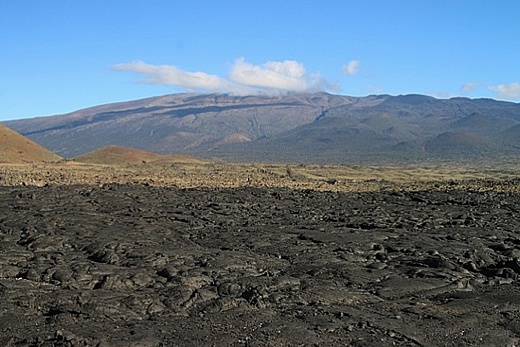 Image above: Mount Mauna Kea on the Big Island as seen from Saddle Road. From (http://blog.travelpod.com/travel-photo/drfumblefinger/1/1299533075/mauna-kea-from-saddle-road.jpg/tpod.html).
Image above: Mount Mauna Kea on the Big Island as seen from Saddle Road. From (http://blog.travelpod.com/travel-photo/drfumblefinger/1/1299533075/mauna-kea-from-saddle-road.jpg/tpod.html).
We've reported before on how climate change is expanding the tropics and sub-tropical zones towards the poles. Now there's some new research showing how man-made pollution, such as black carbon soot, is contributing to this poleward shift.
Think Progress reports on a new study, published in Nature:
Black carbon aerosols and tropospheric ozone, both man-made pollutants emitted predominantly in the Northern Hemisphere's low- to mid-latitudes, are most likely pushing the boundary of the tropics further poleward in that hemisphere.
This expansion of the tropics has been happening at a rate of 0.7° latitude per decade.
As for the potential impact of this, lead author Robert Allen says:
If the tropics are moving poleward, then the sub-tropics will become even drier. If a poleward displacement of the mid-latitude storm tracks also occurs, this will shift mid-latitude precipitation poleward, impacting regional agriculture, economy, and society.For example, the southern portions of the United States may get drier if the storm systems move further north than they were 30 years ago. Indeed, some climate models have been showing a steady drying of the subtropics, accompanied by an increase in precipitation in higher mid-latitudes. The expansion of the tropical belt that we attribute to black carbon and tropospheric ozone in our work is consistent with the poleward displacement of precipitation seen in these models.
If there's some good news in this, it's that reducing black carbon soot is increasingly on the international agenda, and that compared to other climate pollutants its effects are very short-lived once the source of the pollution is eliminated.
.
No comments :
Post a Comment